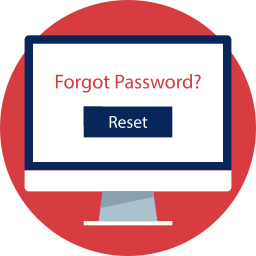Toilet-Training
What is toilet training?
Toilet-training is teaching your child to recognize his or her body signals for urinating and having a bowel movement and using a potty chair or toilet correctly and at the appropriate times.
When should toilet-training begin?
Toilet-training should begin when the child shows signs that he or she is ready. There is no right age to begin. If you try to toilet train before your child is ready, it can be a battle for both you and your child. The ability to control bowel and bladder muscles comes with proper growth and development.
Children develop at different rates. A child younger than 12 months of age has no control over bladder or bowel movements. There is very little control between 12 to 18 months. Most children are unable to obtain bowel and bladder control until 24 to 30 months. The average age of toilet-training is 27 months.
Learning when my child is ready to begin toilet-training
The following may be indicators of your child's readiness to begin toilet-training. Your child should be able to:
-
Walk well in order to get to the potty chair.
-
Tell you when there is a need to go to the potty.
-
Control the muscles used for going to the potty.
Signs that your child may be ready for toilet-training include the following:
-
Asks to have the diaper changed or tells you a bowel movement or urine is coming
-
Shows discomfort when the diaper is wet or dirty
-
Enjoys copying what parents or older children do
-
Follows you into the bathroom and see how the toilet is used
-
Wants to do things (like going to the potty) to make parents happy or to get praise
-
Has dry diapers for at least two hours during the day or is dry after naps or overnight
Getting started with toilet-training
The following tips may help parents get started with toilet-training:
-
If there are siblings, ask them to let the younger child see you praising them for using the toilet.
-
It is best to use a potty chair on the floor rather than putting the child on the toilet for training. The potty chair is more secure for most children because their feet reach the floor and there is no fear of falling off. If you decide to use a seat that goes over the toilet, use a footrest for your child's feet.
-
Children should be allowed to play with the potty: sit on it with clothes on and later with diapers off. This way they can get used to it.
-
Never strap your child to the potty chair. Children should be free to get off the potty when they want.
-
Your child should not sit on the potty for more than five minutes. Sometimes, children have a bowel movement just after the diaper is back on because the diaper feels normal. Do not get upset or punish your child. You can try taking the dirty diaper off and putting the bowel movement in the potty with your child watching you. This may help your child understand that you want the bowel movement in the potty.
-
Children often learn to go to the potty for bowel movements before urine, so you may want to start with bowel training first.
-
If your child has a usual time for bowel movements (such as after a meal) you can take your child to the potty at that time of day. If your child acts a certain way when having a bowel movement (such as stooping, getting quiet, going to the corner), you may try taking your child to potty when he or she shows it is time.
-
If your child wants to sit on the potty, you may stay next to your child and talk and read a book.
-
It is good to use words for what your child is doing ("potty," "pee," or "poop"). Then your child learns the words to tell you. Remember that other people will hear these words. It is best not to use words that will offend, confuse, or embarrass others or your child.
-
Avoid using words like "dirty," "naughty," or "stinky" to describe bowel movements and urine. Use a simple, matter-of-fact tone.
-
If your child gets off the potty before urinating or passing a bowel movement, be calm; do not scold. Try again later. If your child successfully uses the potty, give plenty of praise (i.e., smile, clap, hug).
-
Children learn from copying adults and other children. It may help if your child sits on the potty while you are using the toilet.
-
Children often follow parents into the bathroom. This may be one time they are willing to use the potty.
-
Initially, teach boys to sit down for passing urine, as, at first, it is difficult to control starting and stopping while standing. Boys will try to stand to urinate when they see other boys standing.
-
Some children learn by pretending to teach a doll to go potty. Obtain a doll that has a hole in mouth and diaper area and your child can feed and "teach" the doll to pull down pants and use the potty. Make this teaching fun for your child.
-
Make going to the potty a part of your child's daily routine, such as first thing in the morning, after meals and naps, and before going to bed.
After training is started:
-
Once children start using the potty and can tell you they need to go, taking them to the potty at regular times or overreminding them to go to the potty is not necessary.
-
You may want to start using training pants. Wearing underpants is a sign of growing up, and most children like being a "big girl or big boy." Wearing diapers once potty training has been started may be confusing for the child.
-
If your child has an accident while in training pants, do not punish. Be calm and clean up without making a fuss about it.
-
Keep praising or rewarding your child every step of the way: for pulling down pants, for sitting on the potty, and for using the potty. If parents show that they are pleased when children urinate or have bowel movements in the potty, children are more likely to use the potty next time.
-
As children get older, they can learn to wipe themselves and wash hands after going to the bathroom. Girls should be taught to wipe from front to back so that germs from bowel movement are not wiped into the urinary area.
-
Remember that every child is different and learns toilet-training at his or her own pace. If things are going poorly with toilet-training, it is better to put diapers back on for a few weeks and try again later. In general, have a calm, unhurried approach to toilet-training.
-
Most children have bowel control and daytime urine control by age 3 or 4. Soiling or daytime wetting after this age should be discussed with your child's physician.
-
Nighttime control usually comes much later than daytime control. Complete nighttime control may not occur until your child is 4 or 5 years old, or even older. If your child is age 5 or older and does not stay dry at night, you should discuss this with your child's physician.
-
Even when children are toilet trained, they may have some normal accidents (when excited or playing a lot), or setbacks due to illness or emotional situations. If accidents or setbacks happen, be patient. Examples of emotional situations include moving to a new house, illness or death in the family, or a new baby in the house. In fact, if you know an emotional situation is going to be happening soon, do not start toilet-training. Wait for a calmer time.
There are books and videos on toilet-training you can find at the library or bookstore for additional information. Consult your child's physician for more information.





















